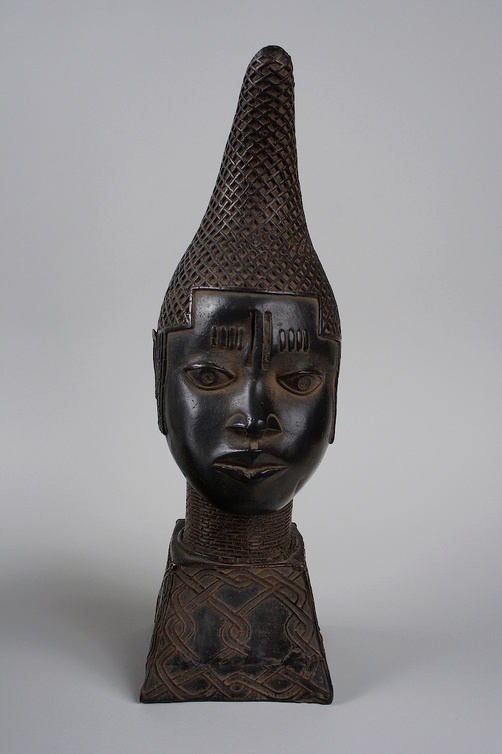
Object Label
Collectors often use their own homes to display objects they acquire. In Western Europe and North America objects from other cultures have been viewed as curiosities; collecting them can reflect a colonialist view: a desire to possess material culture and knowledge of another society. Displaying objects in a home can decontextualize them, silencing their original meaning and emphasizing their exotic appeal.
This object, a reproduction of a memorial head, was acquired by Skidmore alumna Moreen O'Brien Maser ‘26 and Herman Maser around the mid-twentieth century. After finishing her master’s research on Mesoamerican Art, O'Brien Maser and her husband began to shape a collection of objects from around the world. As Herman Maser noted, they intentionally sought imperfect objects or reproductions “so that their people could better appreciate and enjoy their heritage. We thus did not hesitate to acquire some chipped or broken pieces, as well as a few replicas of unusually fine examples which were housed in national museums.
The original memorial head, created in the sixteenth century, lived in the royal palace in Edo, Nigeria. In 1897, British troops looted hundreds of objects from the palace. Many became part of museum or private collections in Western Europe and North America, and only a handful currently remain in Nigeria. Nigerian casters created reproductions of these objects that sold as sculptures; the Masers most likely acquired theirs in New York City. In 1982 they donated it to Skidmore College along with a large part of their collection of world art.
From the exhibition: (Un)known Lives of Objects: From Nigeria to the Tang Collection (September 28 – December 28, 2013)
Ongoing Research
Tang Collective Catalog
The title of Queen Mother (Ioyba) was first given to the sixteenth-century Queen Idia, whose political and strategic skills helped save the kingdom of Esigies from dissolution. The name Ioyba invokes Queen Idia’s political acumen, strength, and resilience. Originally part of ancestral altars and passed down from generation to generation as symbols of national identity and female power, busts such as this one honor Queen Idia and her contributions to the Benin Kingdom.
The bust reveals the Benin Kingdom’s rich visual culture of female rulership. The curvature of her crown comes to a head in a forward-point that distinguishes Queen Mothers from Benin Kings. Her crown, neck rings, facial features, and posture reinforce the female’s place in society as one of authority and power.
A product of Bini visual culture, Head of Queen Idia embodies the fight against colonial injustices and post-colonial pride in Nigeria today. In 1897, British forces plundered the Benin Kingdom and looted thousands of bronze and metal works. This violence disseminated Benin heritage across the western world. As a result, the cultural history of Benin is now in the hands of institutions and collections across Europe and the United States. While activists seek to repatriate Benin works, only few objects are currently in the process of being returned. Made from copper alloy, this bust is identifiable as a replica, yet it still draws attention to Benin’s fraught colonial history. What are the implications if museums allow space for reproductions as equal and regenerative art forms?
Maddie Aho and Eloise Dreesen


